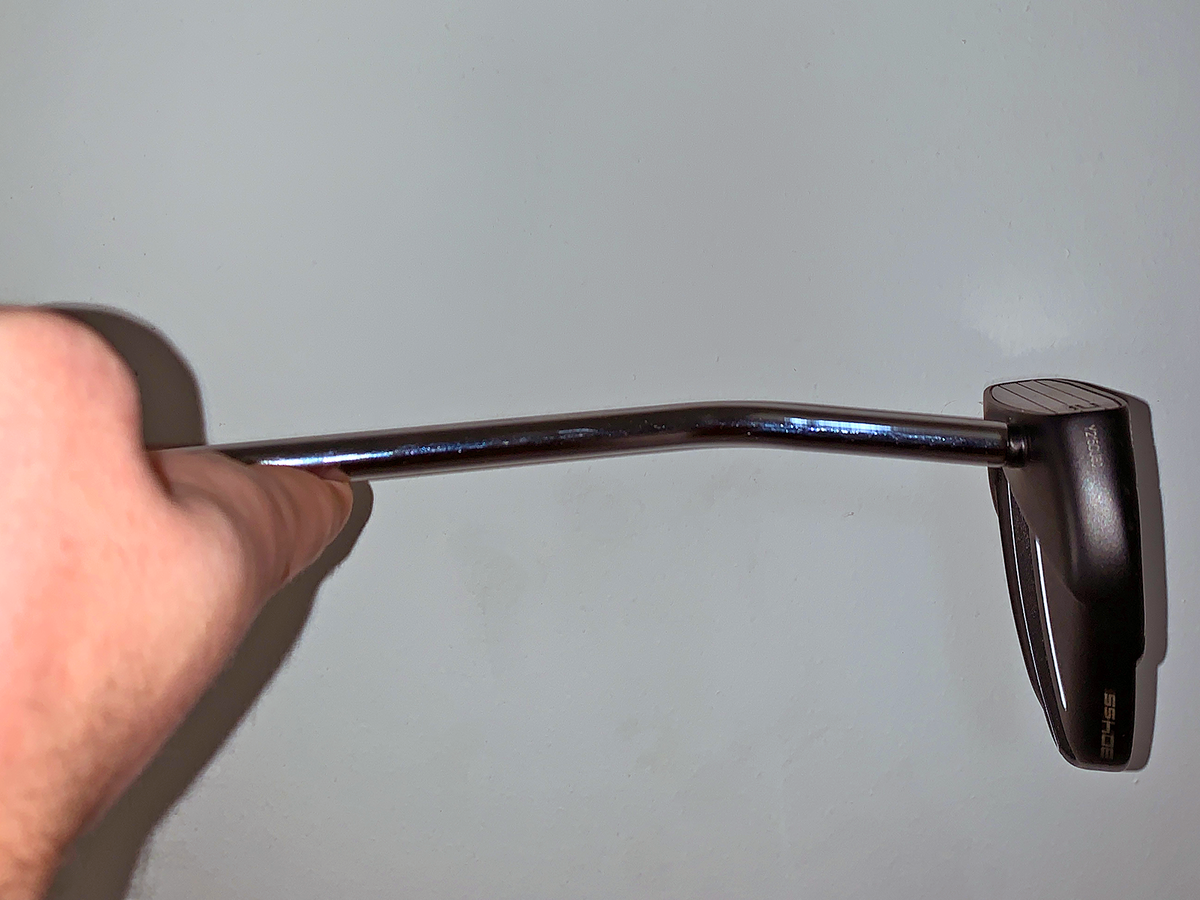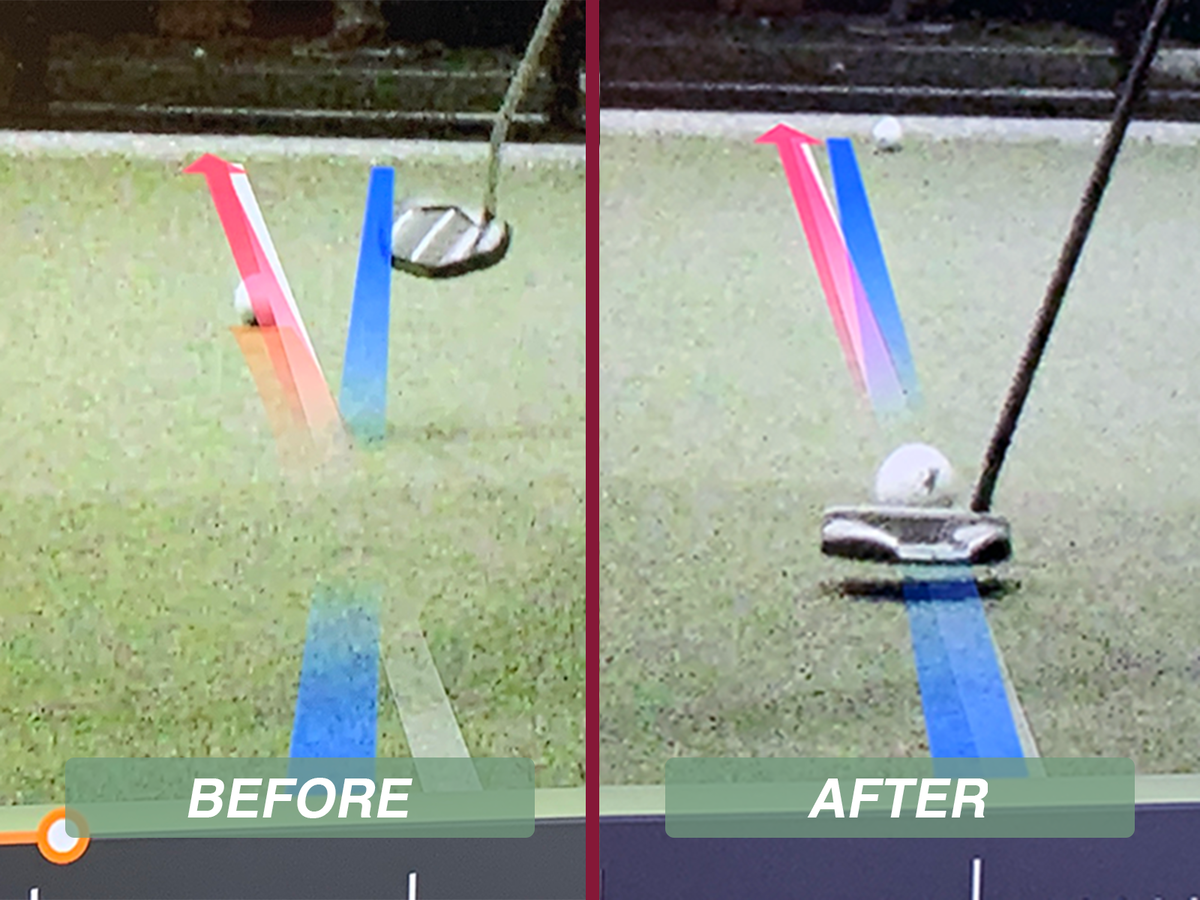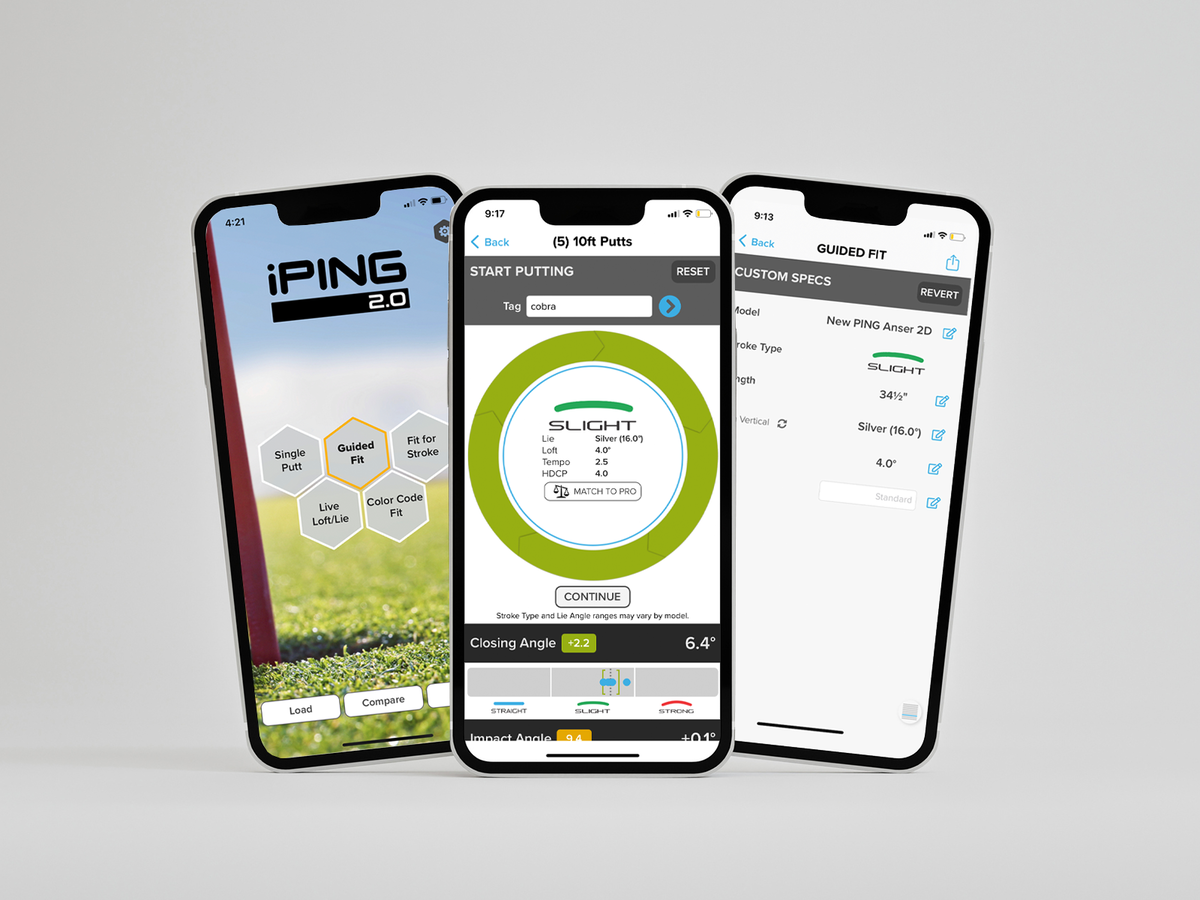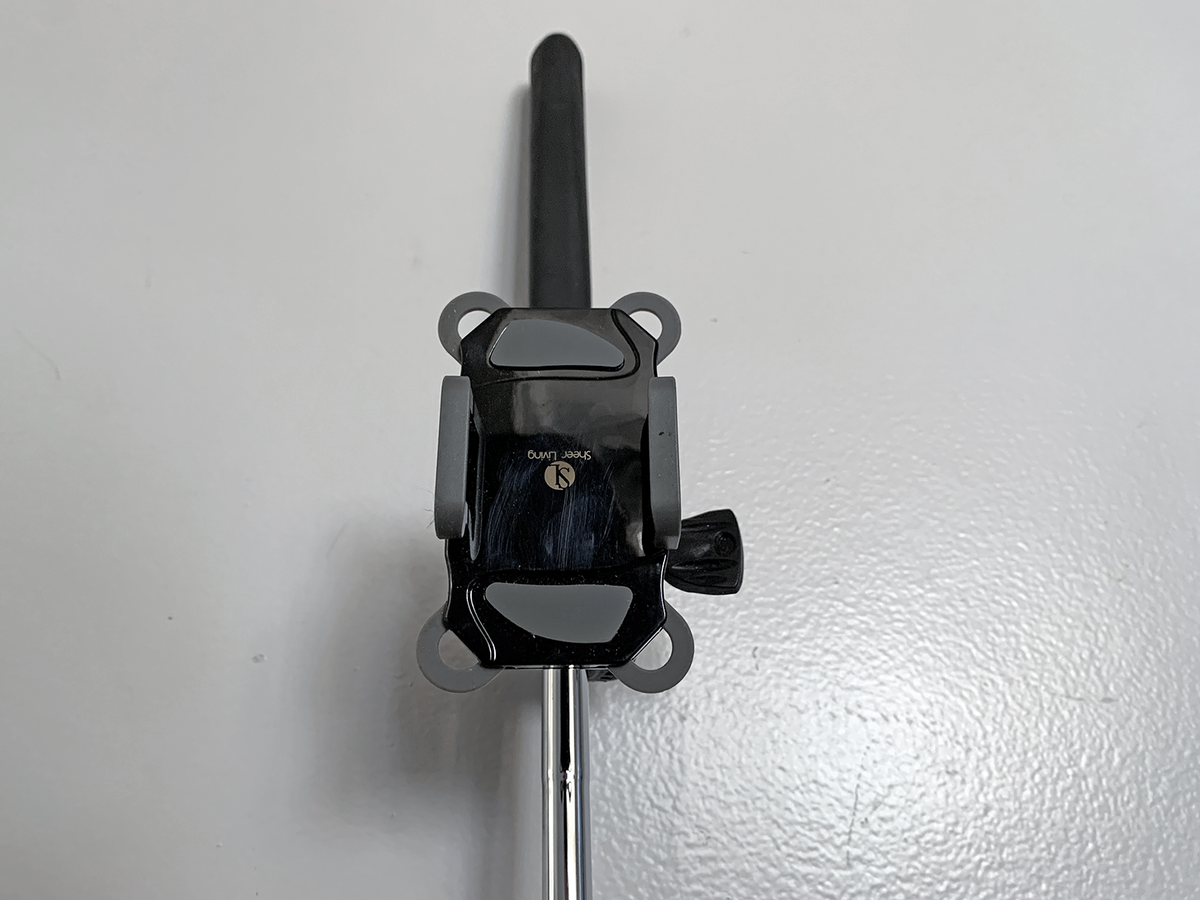Why You Need a Putter Fitting and How to Do It Yourself
Whether you use a professional fitter or do it yourself, here's how to get fitted for a putter

Stop playing a putter that’s costing you strokes.
If you didn’t have a putter fitting to pick out your current putter, I’d be willing to bet it’s hurting your scores.
To help you understand the importance of a putter fitting, and to learn how to get fit for a putter, I went through multiple putter fittings that were quite frankly eye-opening. First I visited PXG Boston for a putter fitting with a professional, then I used an app on my iPhone to do my own putter fitting at home.
Here’s how to find a putter that will actually help your game.
Find a Putter Fitting
Going through a putter fitting can be just like being fit for any other club, but it doesn’t have to be.
You can book a putter fitting at any club-fitting location, like Club Champion, PGA Tour Superstore, or through the pro at your local club. I visited PXG’s Boston location to go through my very first professional putter fitting.
When you work with a professional fitter, you have the advantage of some serious technology to help optimize every aspect of your putter. That not only helps you find the best flat stick for your game, but gives you the extra confidence of knowing that every spec of your putter is built to your needs.
With that said, you can do a pretty good blue-collar job of fitting yourself for a putter at home, if you know how.
The Purpose of a Putter Fitting

A face-balanced putter points up when you balance it in your fingers
Through a putter fitting you can identify the optimal length, loft, offset, weight, head shape, balance, alignment aid, and even face material for your specific putting stroke. For a club you use 30-plus times per round, that’s an investment I believe every player should make.
We published an entire article on which putter fits which stroke type, but for quick reference, the straighter your putting stroke, the less toe hang you should use. The more arc in your stroke, the more toe hang you should have.
| Stroke Arc | Ideal Toe Hang |
| Straight | Face Balanced |
| Slight Arc | Slight |
| Strong Arc | Average - High |

Which Type of Putter Fits Your Stroke
To find out how much toe hang a putter has, balance the shaft in your fingers. If the face points straight up to the sky, it’s face-balanced. If not, the amount that the toe hangs down is the amount of toe hang it has.
During my putter fitting at PXG, my fitter used Trackman to marry video and data on my putting stroke. After one look, it was obvious that my face-balanced putter was fighting the arc in my putting stroke.

Using the right putter can be the difference between making and missing 10-foot putts
Here’s an image of my putting stroke before the fitting. The white line is the ideal target line and the red line is the line my putt followed.
This highlights my tendency to miss to the left. I’m embarrassed to admit that it took almost a year to identify this tendency, but it’s reassuring to have evidence that this flaw wasn’t my fault, rather the result of a putter that’s working against my stroke.
My face-balanced putter is designed to stay square, which is great if you have a straight stroke. But my stroke, like many players, has an arc. I need some toe hang to help the putter rotate to square at impact, but my face-balanced putter fighting that need, resulting in an open face and pushes.
You may think that’s not much to get worked up about, but on a 10-footer, it’s enough to drastically reduce my chances of holing the putt.
Compare that to the result after adjusting to a putter with some toe hang. This putt hugs the target line much tighter, and from 10 feet, there’s much less risk of that push tendency causing a miss.
I instantly became a better putter without changing my stroke at all.
Beyond identifying the right toe hang for my stroke, we locked in the perfect length and adjusted the head weight. I favor a blade putter but I like the stability of a mallet, so we added some weight to the head of the blade and voila, I had the best of both worlds.
While I left with the feeling I had cracked the code on turning mediocre rounds into good ones for my own game, the broadest takeaway I left with was that no matter what your stroke type is and your preference of head style (blade, mallet, fang), you can match your stroke with a putter you like.
At-Home DIY Putter Fitting
Seeing Trackman data overlaid on video of my putting stroke was eye-opening, to say the least. And yes, that’s an experience I think even semi-gearheads would enjoy. But the truth is you can do a pretty darn good job of fitting yourself for a putter in just a few minutes at home.
If you’re considering investing anywhere from $100 to $500 into a new putter, and don’t want to replace it again next year, this is time well spent.
Find Your Putter Length
We published a very thorough article on exactly how to find the perfect length putter for your stroke. If you’re buying a new putter, I highly recommend checking it out, but here’s a general putter length chart cheat sheet for using your height (admittedly not the best measurement) as a jumping-off point.
|
Height |
Putter Length |
|
5-foot-2 to 5-foot-6 |
33 inches |
|
5-foot-7 to 5-foot-11 |
34 inches |
|
6-feet to 6-foot-4 |
35 inches |

How To Find the Perfect Putter Length For You
Finding Your Stroke Type
Please, do not assume you know whether or not your stroke is straight-back and straight-through, or arced. I thought I had a straight-back and straight-through stroke and was missing putts for an entire year before I confirmed it was because I actually have an arc to my stroke.
Film your putting stroke from above using a tripod or even just hanging your phone off the edge of a table. If you can put down a chalk line, or any other straight reference marker, it’ll be easy to see if your stroke truly is straight, or if there’s slight or strong arc.
For a straight-back and straight-through stroke, use a face-balanced putter. For a slight arc stroke, use a putter with slight or moderate toe hang. For a strong arc stroke, use a putter with more toe hang.
This is how, in just a few minutes, you can find the perfect length and balance of your optimal putter. It might not be 100% optimized, but if you get those two things right, you can be confident that your putter is working for you, not against you.
iPING Putter Fitting App for iPhone

Here's what the iPING putter fitting app looks like
If you’re willing to go the extra mile (and if you’re dropping a couple hundred dollars or more on a putter, I suggest you do) to fit yourself for a putter at home, try PING’s putter fitting app.
Even if you’re not looking for a new putter, it’s a seriously cool app for the gearheads out there.
Before I detail the app, I have to note two caveats. First, the app is more for fitters than consumers, and it’s not really being updated these days. It’s more of a well-kept secret. The other thing is, you must mount an iPhone to your putter shaft. I used this Stroller Phone Holder I got off Amazon for less than $20 to mount my phone to my push cart. It worked great.

This mount from Amazon that connects my phone to my push cart worked great for the iPING app
Besides that, anybody has access to the app for free. I downloaded it, logged in as a guest, and fit myself for a putter quite easily.
Once you open the iPING app, there are a few different options on the home screen. I chose the Guided Fit, it’s the most in-depth option and as long as we’re here, we might as well get detailed.
The app asks some basic questions before you strap the phone to your putter and hit five putts. It actually took me closer to 20 putts for the app to record five. I’m not sure why and I don’t really care, but if this happens to you, my only suggestion is that you don’t try to alter your stroke in any way in an attempt to get the app to pick up your putt. That would completely defeat the purpose.
After tracking five putts, the app spits out tons of cool information, like a putting handicap, and of course, a putter recommendation.
You can take that recommendation literally (although it will recommend a putter that’s a few cycles old since the app isn’t being updated), or apply it to any brand of putter you want. The app recommends a specific length, lie, loft and stroke type for your putter, which you can easily apply to a putter from almost any brand.
Become a Better Putter
Just by switching a putter that works against my stroke with one that works with it, I instantly became a better putter. There’s plenty of value in seeing a professional fitter to find the perfect putter for your game, but even if you aren’t ready for that type of commitment, there’s no reason not to fit yourself for two of the biggest variables in your putter, length and toe hang.